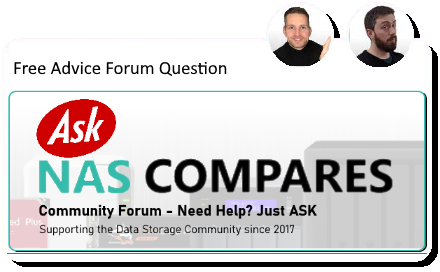Posts: 1,076
Threads: 1,077
Joined: Feb 2020
Reputation:
2
Hi Guys,
I followed your QNAP Jellyfin install (the easy way) and I want to know how I can update the application without losing metadata etc.?
Do I need to uninstall or just install the new version over the top?
I have done a bit of googling with no luck as most people are using docker or container station.
Also thankyou for all your videos, love your work. Helped me a lot in choosing a NAS for home. Spent a lot of time using your videos for research.
Landed on at QNAP TS-664. Safe to say I am out of my depth but learning every day thanks to you.
Cheers.
Posts: 5,362
Threads: 2
Joined: Jun 2022
Reputation:
35
Thanks for reaching out and for the kind words about the videos! I'm glad they've been helpful for you.
Regarding updating Jellyfin on your QNAP TS-664 without losing your metadata, you generally have a couple of options:
Updating Jellyfin without Losing Metadata:
Install Over the Top: You can usually install the new version over the top of the existing one. This method keeps your configuration, metadata, and database intact. When you run the installer for the new Jellyfin version, it will typically update the files without deleting your existing setup.
Backup Before Updating: It's always a good idea to back up your Jellyfin data before updating. You can find your Jellyfin metadata and configuration files in the Jellyfin data directory on your QNAP. Backing up these files ensures that if something goes wrong during the update, you can restore your settings and metadata.
To back up, you can manually copy the Jellyfin data directory to a safe location on your NAS or an external drive.
Steps to Update Jellyfin:
Download the Latest Version: Go to the Jellyfin official website or QNAP Club repository and download the latest version compatible with QNAP.
Install the Update: Run the installation file on your QNAP. The installer should detect the existing version and update it without needing to uninstall the old version. Follow the prompts to complete the installation.
Verify Everything is Working: After the update, check that Jellyfin starts up properly and that your libraries, metadata, and configurations are intact.
Using Docker or Container Station:
Since you mentioned that most guides use Docker or Container Station, if you are comfortable using these, Docker can be a great way to manage applications like Jellyfin. Docker makes updates easy and isolates your applications, reducing the risk of system-wide issues.
However, if you're not familiar with Docker, sticking with the standard installation method is perfectly fine, especially if it's working well for you.





